The United States stamp Scott #239, part of the Columbian Exposition Issue of 1893, commemorates Christopher Columbus and his voyages. This series, issued to coincide with the 1893 World’s Columbian Exposition in Chicago, marked the 400th anniversary of Columbus’s landing in the Americas.
The set, consisting of 16 stamps ranging in denomination from 1 cent to $5, was the first U.S. commemorative stamp series. Scott #239, a 30 cent denomination, depicts Columbus at La Rabida Convent in Spain, emphasizing a key moment in his preparation for the transatlantic voyage. This stamp was intended primarily for higher postal rates, including heavier letters or packages, and was part of the broader effort to promote the Exposition and celebrate historical milestones in exploration.
Design & Print
Scott #239 was printed by the American Bank Note Company (ABNC), the official printer for U.S. postage stamps during this period. ABNC, known for its high-quality engraving and meticulous craftsmanship, utilized steel engraving techniques to produce the stamp. The production of this stamp began in late 1892 to ensure availability for the Exposition, which opened in May 1893. Approximately 617,250 copies of the stamp were printed.
The design of Scott #239 centers on a detailed engraving of Columbus at La Rabida Convent, where he sought support for his exploratory ventures. This scene, surrounded by ornate scrollwork and lettering, highlights the Gothic-style architecture of the convent, with Columbus depicted humbly before the friars. The denomination of 30 cents is prominently displayed in numerals and in words on the design. The stamp was printed in an orange brown ink.
Postal Usage
The 30 cent denomination of Scott #239 was intended for specific postal rates applicable in 1893. During this time, domestic first-class letters were charged 2 cents per ounce, making this stamp unsuitable for basic mail. Instead, it was used for heavier mail or international destinations requiring higher postage. For example, it could be combined with other denominations to meet the postal rates for larger parcels or high-value shipments.
The Columbian stamps, including Scott #239, were introduced in the context of an evolving postal system that sought to simplify rate structures while accommodating the growing volume of mail. At the time, the Post Office was transitioning toward a more modernized system that supported international correspondence, facilitated by the Universal Postal Union, established in 1874. The release of this series also reflected the cultural and economic significance of the Columbian Exposition, which attracted international attention.
Identification
Scott #239 can be identified by its intricate design and specific production characteristics. The central engraving of Columbus at La Rabida Convent is detailed, showing clear architectural elements and a discernible depiction of Columbus.
The top and bottom inscriptions, reading “United States of America” and “Postage Thirty Cents,” respectively, are crisp and framed by ornamental scrollwork. Compared to other stamps in the Columbian series, Scott #239 can be differentiated by its denomination, orange brown color, and specific depiction of the La Rabida scene.
The top left corner says “1492” while the top right corner says “1892”. Not to be confused with the 1992 reissue (Scott #2626b) that says “1992” in the top right corner.

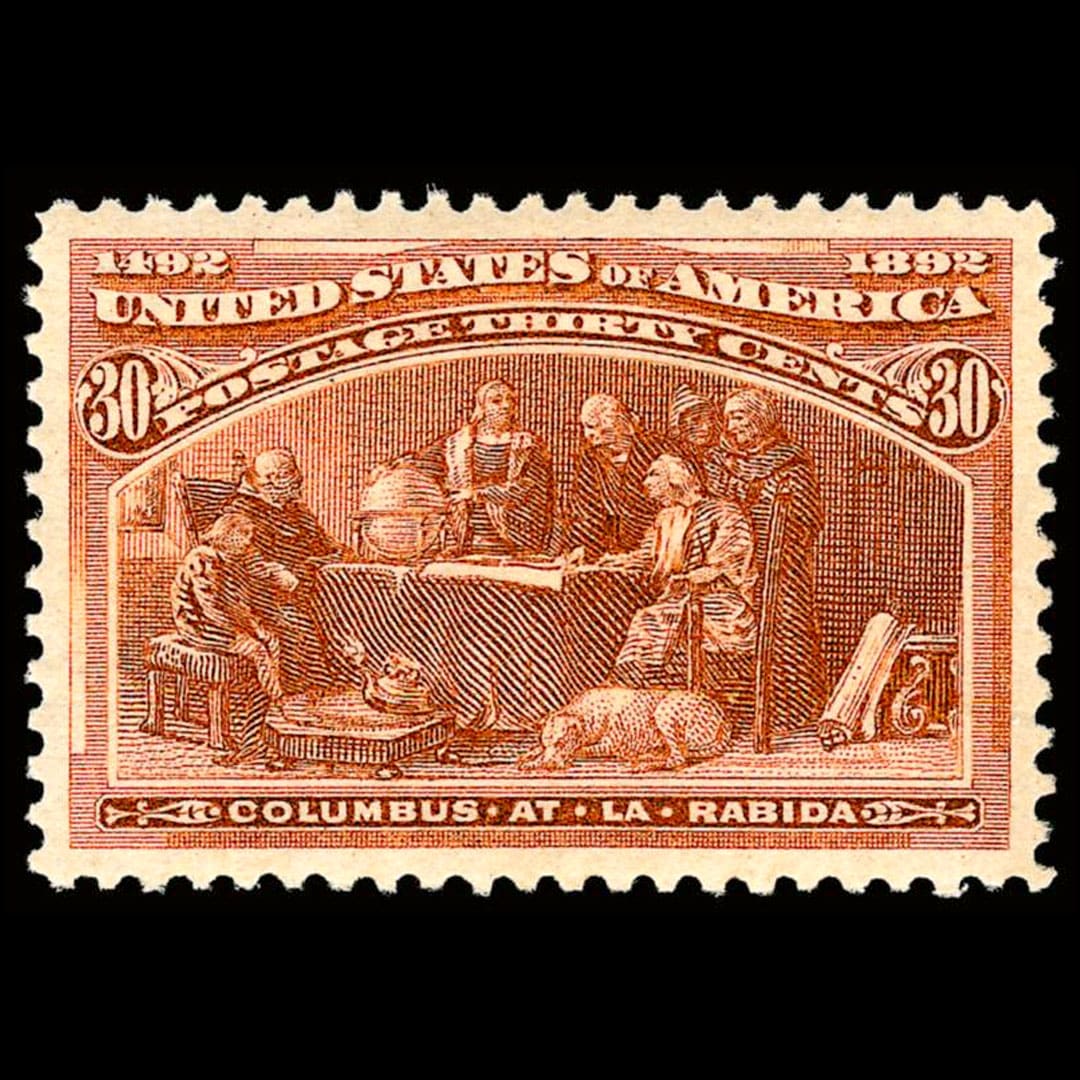


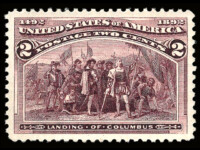
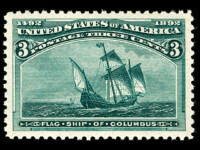
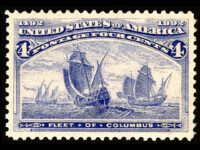
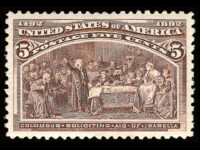
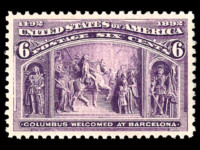
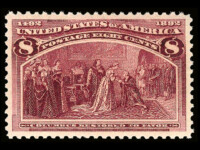
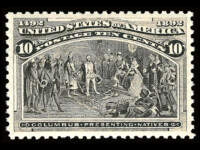
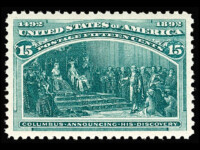
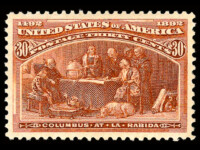
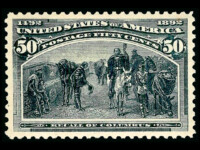
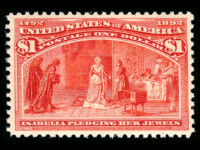
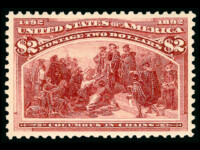
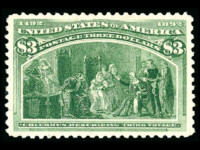
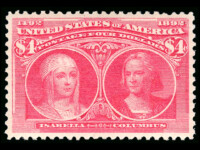
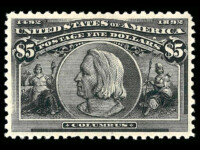











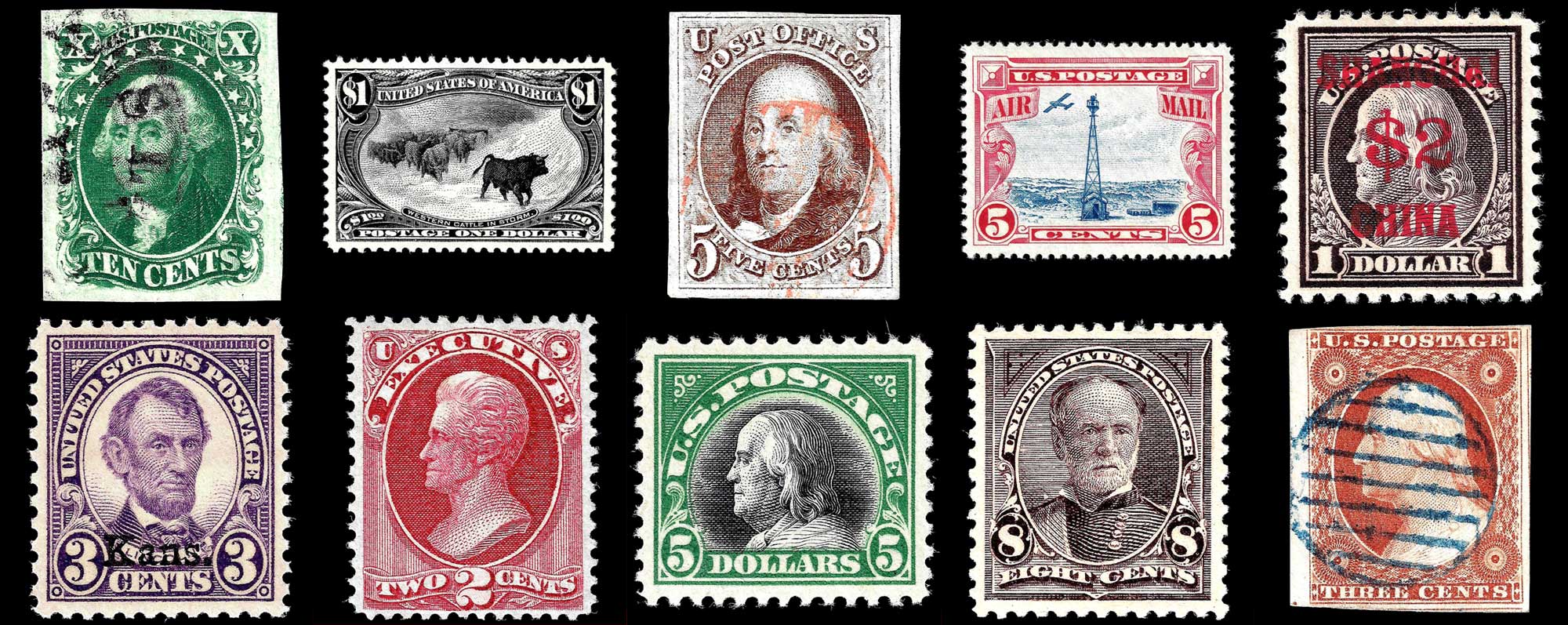
Ask A Question Or Leave A Comment